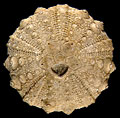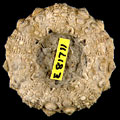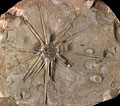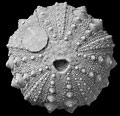The Echinoid Directory
Acrosalenia L. Agassiz, 1840, p. 38
[= Plesiosalenia Valette, 1906, p. 275 (subjective); = Perisalenia Valette, 1906, p. 276 (subjective).
See also Acrosalenia (Milnia) Haime, 1849 ]
| Diagnostic Features |
|
|---|---|
| Distribution | Lower Jurassic (Hettangian-Sinemurian) to Lower Cretaceous (Valanginian); Europe, Former Soviet Republic, North Africa; Middle East. |
| Name gender | feminine |
| Type | Acrosalenia spinosa L. Agassiz, 1840, by original designation. |
| Species Included |
|
| Classification and/or Status |
|
| Remarks |
|








